As pressure grows for consumers to improve their children’s diets, parents are actively seeking out lunchbox snacks that are high in nutrients and low in sugar
Back in the eighties, nineties, and even early noughties, any school kid who veered from the standard sandwich, chocolate bar and crisps lunchbox combo was risking social suicide. A token piece of fruit was just about acceptable, but any further attempts at healthy snacks were generally frowned upon by their recipient, and his or her peers, before being smuggled into the bin in an empty Wotsits pack.
Fast forward to today and lunchboxes are going through something of a revolution, with the likes of hummus, carrot sticks and cucumber chunks now making regular appearances.
As the UK grapples with its obesity epidemic, the pressure is on for parents – and retailers – to source healthier items in a bid to get kids on the road to a balanced lifestyle from day one.
Most schools have healthy eating initiatives across school dinners and packed lunches, some of which involve a complete ban of those once ubiquitous chocolate bars and crisps. Meanwhile, Public Health England (PHE) has launched the first Change4Life campaign promoting healthier snacks and advising parents to read traffic light labels on the front of the packs.
“It is no secret we have an obesity problem in the UK. Nearly two-thirds of Britons are overweight,” says Franco Beer, founder of Boka Food, which produces snack bars carrying four green traffic lights. “Boka snack bars are making their way into a growing number of schools due to their popularity with parents following criteria set out by Change4Life, which aims to get children/parents eating no more than two 100-calorie snacks per day.”
Soreen is also making it easier for parents to make healthy choices with informative packaging including colour-coded guideline daily amounts. “We pledged our support of the Change4Life Snacking campaign by badging a number of products with 100kcal badges, including the Lunchbox Loaves range,” says marketing director Bethan Brown.
Make sure you have all the write stuff
Convenience retailers located in family areas are planning their stationery offering now for the lucrative back-to-school period.
“When the kids are going back to school they need various pens, pencils and protractors,” says Raj Aggarwal, of Spar Hackenthorpe in Sheffield. “It’s high-margin stuff, so why wouldn’t you get behind it? We always have it in-store, but we top it up for September. We try to keep it reasonable to purchase, but even then you’re looking at 40-50% margins.
“We use Jacksons to supply our stationery. They have offers on over the summer so we’ll buy for the rest of the year. We look at the new designs of pencil cases and folders, and look for something a bit funky that the kids will like.”
A strong display can make a big difference, claims Val Aston, director of the Proudfoot Group, which owns five stores in Scarborough.
“If you can afford the space, then a dedicated back-to-school display is key as it helps to flag up to shoppers that you stock these products and can also act to remind them of things that they may well have forgotten they needed,” she says.
“Stationery including A4 pads, folders and pens does particularly well during this time of year, so we put all of these items in a gondola end display, and we also put up POS material to draw customers’ attention to the area. We run a £1 promotion on the pads and folders, which is very successful.”
Prestbury Village Stores in Cheltenham is opting for a dedicated display. “In September we’ll have another unit for back-to-school products,” says owner Jerry Tweney. “We’ll have a dumpbin for pens and pencils and A4 pads. We generally sell everything at £1.49.”
Lunchbox Loaves, including malt, banana and apple flavours, have grown 18% year on year and the range is up 55% since March 2016. The firm claims Soreen malt Lunchbox Loaves have 59% less sugar and 85% less fat than an average cake bar. They are also growing five times faster than cake as a category, indicating a strong demand for a healthy alternative, claims Brown.
“In 2018 consumers are increasingly demanding healthier snacking solutions for their lunchboxes,” concurs Hippeas managing director Craig Hughes. “Following initiatives such as PHE’s calorie campaign, consumers are becoming more aware of the importance of snacks containing less than 100 calories and so lighter options are gathering significant traction, particularly in the crisps category.
“Pulse-based, extruded products, such as Hippeas, naturally tick key attribute boxes such as low calorie, protein, fibre and gluten free that traditional potato-based snacks do not. We expect to see these trends reflected in back-to-school season.”
Parents are hungry for information about their kids’ snacks in order to make healthy choices, claims Propercorn, which makes kids’ popcorn containing less than 56 calories per 12g pack. “We identified a need among 97% of parents for increased clarity on what goes into the products they buy and feed their families,” says co-founder Cassandra Stavrou.
“Parents are increasingly looking to retailers to help them make the right decisions when it comes to feeding their family, with 52% of consumers believing retailers have a role to play in helping them be healthier. It’s crucial that retailers really get behind healthier snacking for children, as there’s a big gap for it in the crisps, snacks and nuts fixture.”
But despite the obvious need for retailers to provide healthier snacks, parents are still struggling to find them. Research by Netmums and Sugarwise revealed that 75% of parents would be willing to spend more on low sugar/good tasting foods if they were available, but 38% of parents say they are unable to find such lunchbox snacks in-store.
And by failing to assist parents on their search for healthier products, retailers are missing out on much more than just the lunchbox shopper mission itself.
mini babybel gets organic offspring
Mini Babybel is extending its market-leading range with the launch of Mini Babybel Organic, the UK’s first branded organic snacking cheese.
Mini Babybel Organic will help retailers tap into the lucrative organic food and drink segment, which has grown 6% in the past year alone and is currently worth more than £2bn, claims Bel UK.
“Driven by three key considerations – health, environmental and social – shoppers are not only actively seeking out organic products, but are also willing to pay a premium for them, creating significant sales opportunities,” says Mini Babybel senior brand manager Gaelle Vernet.
“With 90% awareness, Mini Babybel continues to spearhead growth (+5.2%) in snacking and this latest addition to the range is set to drive further incremental sales.”
Aligning with existing organic products in the UK market, Mini Babybel Organic will feature impactful green packaging to ensure maximum on-shelf visibility and drive purchase, while differentiating it from the core range. Each net contains five 20g cheeses (100g) and will be supplied to retailers in cases of 12. Rrp is £2.49.
“Back to school is important for us because we are a village store and we have a lot of parents in our demographic,” says Jagbir Athwal, who owns a Costcutter on Forest Road in Leicester. “It’s a big opportunity to get people into habitual shopping with us. So picking the right multipacks and the right lunchbox treats that are a good mix of healthy and appealing to the children and the mums, works really well, because once they know they can get those sorts of things from us, they will keep buying them again and again throughout the whole year.”
Raj Aggarwal, who runs Spar stores in Wigston, Leicestershire, and Hackenthorpe, Sheffield, claims that stocking healthier lunchbox products is essential. “If you have a good concentration of kids in your area, you have to manage your lunchbox products well,” he says. “Mums are taking a healthier approach to preparing lunches. They’ve wised up to the fact we can’t keep putting rubbish into the kids’ lunchboxes. Some schools have even banned certain items, so they have to be mindful of that.
“It’s important to offer a good cross-section – you have your multipack snack items, but on top of that you need to offer a healthy option.”
He offers bananas and apples, as well as snack packs of fruit.
Harj Gill, of The Windmill Select & Save in Birmingham, has a primary and senior school nearby. He says multipacks of crisps and chocolate still sell well for lunchboxes, but that parents also want healthier lunchbox snacks. “It’s important to have the option there, because there’s a lot of emphasis on eating healthily with the sugar tax coming in,” he claims. “We do little pots of yogurt and they sell very well.”
Jagbir knows only too well how crucial it is to stock healthy lunchbox products. “Parents are really on trend with what’s healthy,” he says. “Before, some products were high in sugar or fat, but would be marketed in a way to make them sound healthy. But people don’t buy into that anymore. They educate themselves and are being more disciplined.”
He claims that The Collective Gourmet Live yogurts go really well for older children, adding that parents are keen to give those types of things to their kids as an alternative to traditional treats such as chocolate bars.
He also cites jelly and custard pots, including Hartleys and Ambrosia brands, as lunchbox hits. “They’re all reduced sugar or low in fat,” he claims. “They’re ambient products, but we sell them from the chiller because we find they are better cold and more appealing. We wouldn’t have had those products on our shelves a year-and-a-half ago; it’s all driven by that family shop.”
Other fresh snacks that hit the mark at Jagbir’s Costcutter Forest Road are chilled snack packs of grapes, fruit cocktails, chicken chunks, Babybels and Cheestrings. “We sell loads of lower-fat cheese,” Jagbir adds.
Bel UK agrees that consumers are actively seeking out healthier lunch options for their kids. “The light variant is currently the fastest-growing sku within the lunchbox cheese category, spearheading a 68% increase in lunchtime occasions year on year,” says senior brand manager Gaelle Vernet.
In fact, cheese products as a whole have benefitted from consumers’ adopting a healthier mindset. “While lunchbox snacking categories have historically been associated with unhealthy foods, a recent backlash against sugar and processed carbohydrates has seen more Brits paying attention to the nutrition label before purchasing,” states Anca Lazar, brand manager of Cathedral City Snacking at Dairy Crest.
“In pursuit of a healthier way of life, these consumers are turning their back on traditional crisps and sweet snacks in search of more nutritious savoury alternatives. Consumers are becoming more mindful of the quality of calories, which means that naturally nutritious, protein- rich snacking products such as dairy-based snacks have become increasingly popular.” The firm claims that the pre-packed cheese snack sector has seen 4% revenue growth in the past year across total grocery and with 54% of cheese snack consumption at lunch.
Harj and Raj have certainly found this to be the case, with both retailers citing cheese snack packs as prime lunchbox fodder. “Cathedral City does sticks of lunchbox cheeses with pickle, then you have your Dairylea Dunkers and Lunchables – they’re all good sellers,” says Raj.
The snacking kits sub-category is the key driver of growth within processed cheese, growing at 10%, with Dairylea Lunchables having a 65% share and 4% annual growth, claims Mondelez. The firm added Dunkers Sweet Chilli Baked Bites to the range earlier this year, with a pack of four retailing at £2.71.
Quorn targets families with new campaign
Veggie brand Quorn is launching a £1.5m TV campaign to encourage consumers to make family dinners healthy during the back-to-school period.
Quorn Foods marketing director Peter Harrison says: “Back to school gives retailers an opportunity to inspire families to enjoy great tasting products that are both healthy and easy to prepare for their favourite meals.
“Family meal times are becoming increasingly important, with 119 million more family ‘together time’ occasions versus last year.
“Our Back to School campaign launches mid-August and runs until the end of September and will focus on two of our core frozen skus: Quorn Crispy Nuggets; and Quorn Sausages.”
The TV campaign will be supported by the third video in Quorn’s ‘Plate Up’ series with Ben Fogle. The series sees Ben go on a journey to discover how relevant eating less meat is to modern-day living. In this episode Ben meets Rachel Stevens to highlight how easy Quorn makes it to reduce meat consumption.
Quorn has also embarked on a ‘What’s for Tea?’ partnership with Netmums which will engage 2.3 million parents with recipe ideas.
The company says Quorn accounts for more than 49% of all frozen meat-free sales and the UK’s meat-free category is up 17% year on year with annual sales now exceeding £339m.
Soft drinks
Soft drinks with healthier credentials can also play a key role in lunchboxes. “The ongoing sugar debate has been taking hold of the headlines for the past year, and with new PHE recommended guidelines, the childhood obesity crisis has been at the forefront,” states Wayne Thomson, customer marketing manager at FrieslandCampina UK, which makes milk drink Yazoo. “With this in mind children’s lunchboxes are evolving, parents are becoming more aware of what their children are eating. Likewise, schools are closely monitoring what is being consumed by pupils during school hours.”
The group claims that Yazoo is well-suited to lunchboxes as it is high in calcium and protein and contains no added sugar, plus it doesn’t have to be stored in the fridge. The drink will be on TV and radio this summer with its Top up Tummies campaign ahead of the back-to-school period.
Appy Food and Drinks agrees that parents have a renewed focus on what is in their kids’ food and drink. “Today’s parents are very health savvy and know what ingredients to avoid so it is imperative that convenience retailers stock healthy lunchbox items that will comply with school regulations,” says head of PR & comms Annalisa Del Carro.
“Back-to-school purchases are being steered by a trend for healthy products with added benefits that will not have a detrimental effect on kids’ wellbeing.” As such Appy Kids Co has launched a range of flavoured milk drinks rich in vitamins and calcium. Packed in 189ml Tetra cartons, packs feature characters from the TV cartoon Paw Patrol.
Kids’ juice drinks are also vying for space in packed lunches by appealing to health-conscious parents. “Health and wellness is high on the agenda of all consumers, and parents are giving more thought to the items they include in their family’s lunchbox,” says Amy Burgess, trade communications manager at Coca-Cola European Partners (CCEP). “As well as healthy snacks and lunch meal items, such as fruit packs and carrot sticks, it’s important retailers stock a choice of soft drinks in a variety of formats.”
In March CCEP changed the recipe of the original Capri-Sun by introducing stevia, a naturally-sourced sweetener. The group’s regular Capri-Sun variants across the 330ml and 200ml pouch formats now contain 50% less sugar, meaning the full Capri-Sun range is soft drinks tax-exempt. The drink is currently featuring in an advertising campaign running until the end of 2018, across TV, digital and PR.
Raj has witnessed demand for sugar-free and reduced sugar lunchbox drinks. “We stock smaller multipack Fruit Shoots, which are supposedly healthy because they’re sugar free,” he says.
Britvic recently launched Juiced, a new Robinsons Fruit Shoot product, supported by the leading brand’s £3.5m ‘It’s My Thing’ marketing campaign. The drink is sweetened with real fruit and contains a 50/50 blend of juice and water. What’s more, the whole range is now packaged in a semi-translucent bottle and carries clear on-pack messaging highlighting its ‘made with real fruit’ and ‘no added sugar’ positioning. The brand is also working in partnership with PHE’s Change4Life campaign.
Jagbir claims that natural fruit drinks, such as Innocent Smoothies and Naked Green Machine and Blue Machine drinks, are popular packed lunch components, along with protein products such as the Weetabix On The Go drinks. “Breakfast drinks, like the Weetabix drink, go really well, especially with warm weather because people don’t want products going soggy in their lunchboxes,” he says. “Smartwater, Fitwater and vitamin waters are also popular.”
Clearly Drinks marketing director Katerina Gilbert points out that parents are now careful with the drinks they purchase for their children and themselves, and as a result are looking for low- or no-sugar drinks that contain natural ingredients. “Flavoured spring water is the closest they can get to plain water, while at the same time being tasty,” she says.
Birds Eye helps make after-school meals simple
Parents might breathe a sign of relief when their kids go back to school in September, but then they’re faced with the struggle to keep them fed and happy after school.
Birds Eye claims that with the ever-increasing focus on the nation’s health, frozen food is a natural fit on the back-to-school repertoire, being naturally preservative and additive-free.
The firm says frozen chicken has seen a strong start to the year in the convenience channel with 11.9% value sales year on year.
Birds Eye has put £7.8m behind chicken in 2018 with Chicken Dippers being promoted on TV for the first time in seven years. It will continue to be on-air through the back-to-school period.
Birds Eye fish fingers will also be on TV screens, having been revamped with a new crispier crumb. Packs have been redesigned to give the shopper clear visibility of its ingredients.
Family staple Birds Eye Garden peas has also undergone a packaging makeover, with its protein and vitamin C benefits clearly highlighted on front of pack, in time for schools’ start.
New to the fold is Birds Eye Gluten-Free Chicken Nuggets to complement the other Birds Eye Gluten-free products available (fish fingers, waffles, coated fish among others) to give children who have allergy requirements a broader range to choose from.
The company advises convenience retailers to promote key back-to-school products, focusing on price promotions on fish fingers, waffles, chicken dippers and garden peas.
“Meal deals are a great way to help the shopper to quickly and easily select their back-to-school products, as well as driving basket size for the retailer,” says activation manager Jessica Stephens. “Retailers should make sure the meal deal is clearly signposted and is simple enough to get the shopper’s attention. If space allows, create and mark out a section of the freezer to group back-to-school products together. Use signage next to high traffic products to direct the shopper to the freezer – for example, advertise fish fingers or Chicken Dippers next to ketchup.”
The firm recently expanded its Perfectly Clear zero-sugar flavoured water range to include a 330ml lunchbox-friendly size.
Jagbir states that NPD is especially relevant to the lunchbox category as children are always interested in anything new. “It’s important to select products carefully and just try different things. For this segment particularly, it’s huge; kids’ tastes change straight away,” he says. “Somebody who’s 30-plus will have the same drink every day for 10 years. Kids aren’t like that. It has to be different and new and exciting.”
He claims that listening to manufacturers talk about new launches and trends is vital for knowing which lunchbox products to stock. “Titles like Convenience Store are really good because they’re the experts in how the market is going,” he says.
And even if something doesn’t work the first time that doesn’t mean it won’t work for ever. Jagbir explains: “Not everything is going to work straight away, but it might be something that comes back round the next year. When we first brought Thins in-store, we ended up sending them back and delisting them. But we had the Warburtons rep come in April and we re-listed them and now they’re a really popular line.”
Other healthier breads are also selling well for Jagbir. “50/50 bread is really popular, as well as granary and tiger loaves for lunchboxes.”
Jagbir also takes customers’ lunchbox suggestions onboard. “We do a wholemeal tortilla wrap which a customer asked us to stock. We had the white tortillas before, but now we have 50/50 and brown wholemeal and wholemeal pittas.”
He claims that his customers are happy to pay a premium for a healthier bread. “If you’re going to spend £1 on something, then spending £1.30 on something healthier isn’t too much of a problem for our customers. Once they start buying a wholemeal tortilla, a white flour one won’t do, so it’s important to keep it and it’s a big point of difference between us and the two local Co-ops.”
The way in which you display lunchbox items can also have a big impact on sales. “We have a wooden under-counter unit at a low height for some of the kids stuff so they can pick up and read the labels themselves,” says Jagbir. “It goes really well. It’s important to let kids choose what they like themselves.
“In the fridge we try to put healthier stuff at eye level.”
Bel UK’s Vernet agrees that grouping products together can heighten awareness and aid navigation. “Tailoring ranges to specific lunchtime occasions with healthier options and introducing specialist fixtures or counters that can be shopped conveniently to suit increasingly busy consumer lifestyles are key to success,” she says.
Appy Food and Drinks concurs. “Parents don’t have much time to trail through shopping aisles searching for goods, so it is a good idea to keep all back-to-school products together,” says Del Carro.
“A suggestion would be to display healthy snacks and drinks near fruit and other good-for-you foods, rather than with typically unhealthy confectionery items. POS material and shelf wobblers with the clear message of back-to-school promotions are a must.”
With sugar and calorie content both under scrutiny, selecting lunchbox fillers that will keep both mums and kids satisfied is no mean feat. But the rewards are rich.
“If you do it right and do it well then that’s the whole family locked into the store,” says Jagbir. “You’ll not only be their go-to for lunchbox – you’ll be their first choice convenience store on a Saturday night or Sunday morning, too.”
An opportunity for butters and spreads
The sandwich is the most popular lunch option, and more than a billion are eaten a year from 1.3 billion lunchboxes, states Unilever.
Clearly this presents opportunities for butters and spreads category growth, as 44% of spreads and 35% of butter usage is in sandwiches, the firm points out.
“Butters and spreads are a kitchen essential, with a high proportion of ‘need it now’ purchases where consumers have run out and need to stock up quickly for packed lunches,” says Nick Widdowson, Partners for Growth merchandising and creative controller. He says 93% of shoppers already know what brand of butter or margarine they want before they set foot inside the store.
He adds: “Shoppers choose which area of the spreads category they buy – butter, healthy spreads etc – depending on their attitudes to taste and health. It is therefore vital that the brands you offer reflect the breadth of your shoppers’ tastes. Sticking to a tight range of the most popular brands and formats across the four product groups, and presenting them in a logical way, will bring success.”
He also encourages retailers to stock complementary products such as sandwich fillers to drive incremental sales for lunchboxes.
















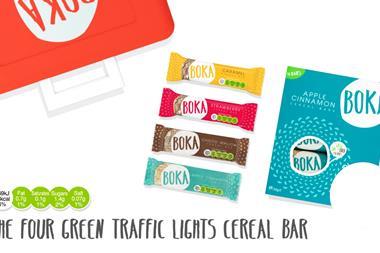
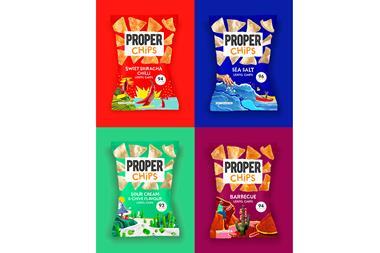
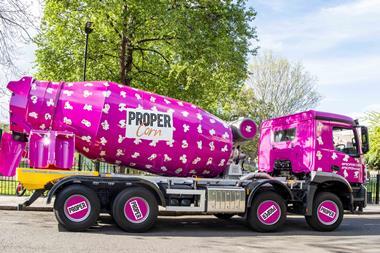
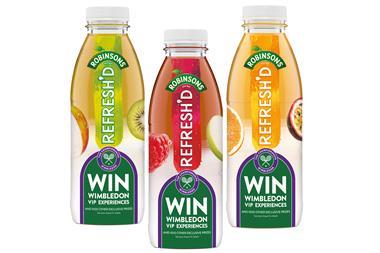
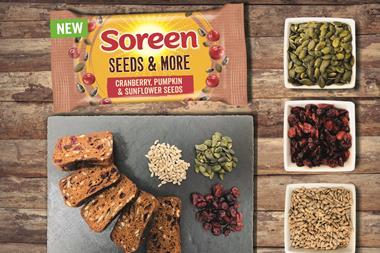
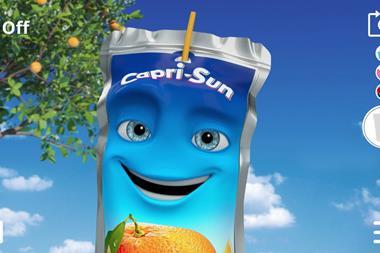
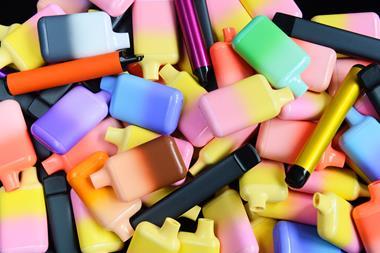





No comments yet